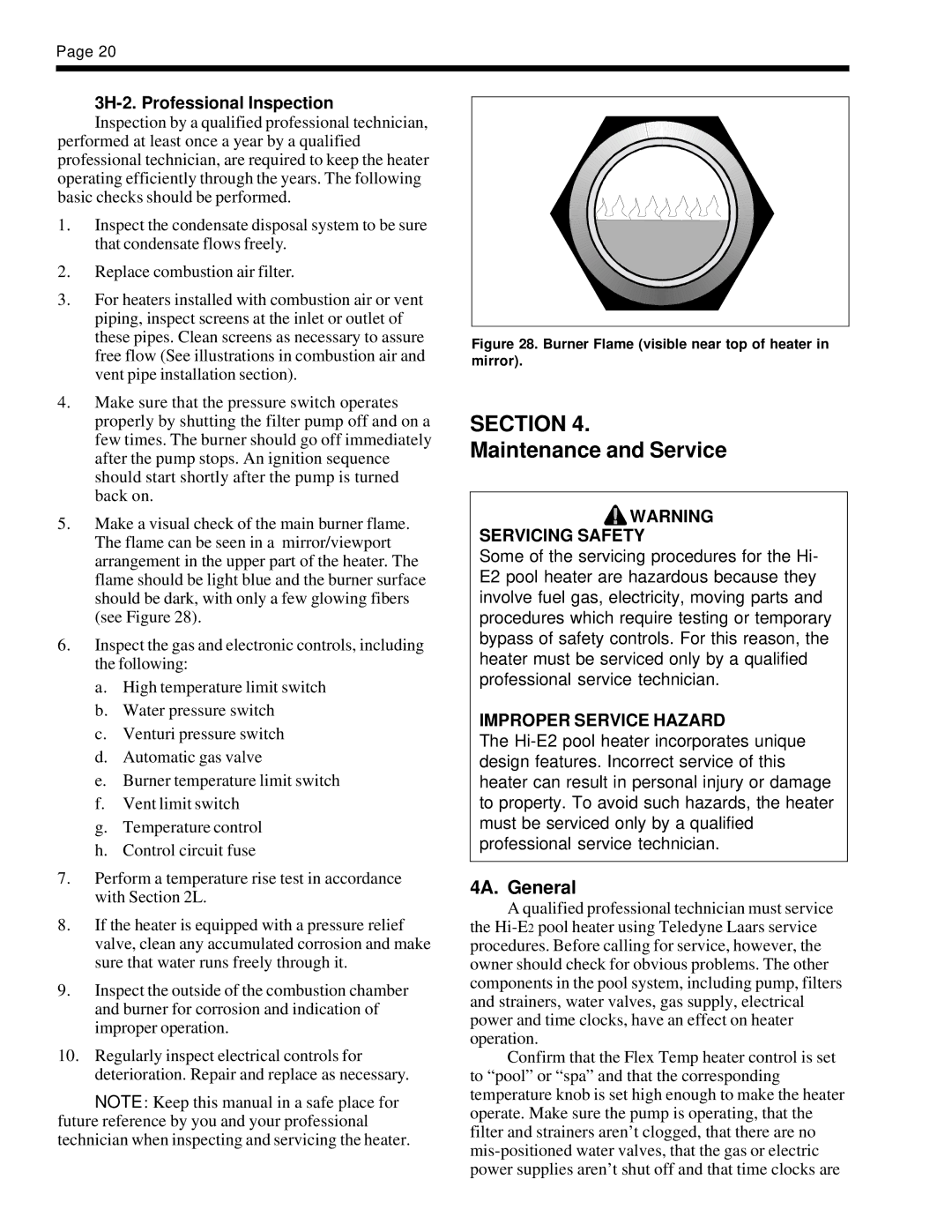
Page 20
3H-2. Professional Inspection
Inspection by a qualified professional technician, performed at least once a year by a qualified professional technician, are required to keep the heater operating efficiently through the years. The following basic checks should be performed.
1.Inspect the condensate disposal system to be sure that condensate flows freely.
2.Replace combustion air filter.
3.For heaters installed with combustion air or vent piping, inspect screens at the inlet or outlet of these pipes. Clean screens as necessary to assure free flow (See illustrations in combustion air and vent pipe installation section).
4.Make sure that the pressure switch operates properly by shutting the filter pump off and on a few times. The burner should go off immediately after the pump stops. An ignition sequence should start shortly after the pump is turned back on.
5.Make a visual check of the main burner flame. The flame can be seen in a mirror/viewport arrangement in the upper part of the heater. The flame should be light blue and the burner surface should be dark, with only a few glowing fibers (see Figure 28).
6.Inspect the gas and electronic controls, including the following:
a.High temperature limit switch
b.Water pressure switch
c.Venturi pressure switch
d.Automatic gas valve
e.Burner temperature limit switch
f.Vent limit switch
g.Temperature control
h.Control circuit fuse
7.Perform a temperature rise test in accordance with Section 2L.
8.If the heater is equipped with a pressure relief valve, clean any accumulated corrosion and make sure that water runs freely through it.
9.Inspect the outside of the combustion chamber and burner for corrosion and indication of improper operation.
10.Regularly inspect electrical controls for deterioration. Repair and replace as necessary.
NOTE: Keep this manual in a safe place for future reference by you and your professional technician when inspecting and servicing the heater.
Figure 28. Burner Flame (visible near top of heater in mirror).
SECTION 4.
Maintenance and Service
![]() WARNING
WARNING
SERVICING SAFETY
Some of the servicing procedures for the Hi- E2 pool heater are hazardous because they involve fuel gas, electricity, moving parts and procedures which require testing or temporary bypass of safety controls. For this reason, the heater must be serviced only by a qualified professional service technician.
IMPROPER SERVICE HAZARD
The
4A. General
A qualified professional technician must service the
Confirm that the Flex Temp heater control is set to “pool” or “spa” and that the corresponding temperature knob is set high enough to make the heater operate. Make sure the pump is operating, that the filter and strainers aren’t clogged, that there are no
